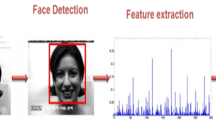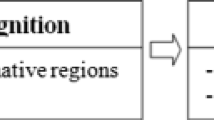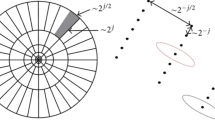Abstract
Electroencephalogram (EEG) records brain activity using electrophysiological markers and is a comprehensive representation of the dynamic activity of human brain neurons. EEG can be used to study human facial expression recognition. In fact, entropy values of EEG can fully reflect changes in facial expressions. This paper improves the sample entropy and the permutation entropy by introducing equal probability symbolization and applies the equal probability symbolization entropy to facial expression recognition. The original permutation entropy, sample entropy and equal-probability symbolization entropy values are calculated for the three expressions of anger, fear and happiness. The results demonstrate that equal-probability symbolization entropy can distinguish human facial expressions clearly and accurately.
Access this chapter
Tax calculation will be finalised at checkout
Purchases are for personal use only
Similar content being viewed by others
References
Fox, E.: An integration of cognitive and neuroscientific approaches, 16–17 (2008)
Hosseini, M.B.: Emotion recognition method using entropy analysis of EEG signals. Int. J. Image Graph. Signal Process. 3(5), 30–36 (2011)
Su, J.X.: Emotion Recognition Based on EEG Signals. Nanjing University of Posts and Telecommunications, Nanjing (2015)
Gao, L.P., Shao, B., Zhu, L., Lu, T., Gu, N.: Maintaining time and space consistencies in hybrid engineering environments: framework and algorithms. Comput. Ind. 59(9), 894–904 (2008)
Nicolaou, N., Georgiou, J.: Permutation entropy, a new feature for Brain-Computer Interfaces. In: Biomedical Circuits and Systems Conference, pp. 49–52. IEEE (2010)
Cowie, R., Douglascowie, E., Tsapatsoulis, N., et al.: Emotion recognition in human–computer interaction. IEEE Signal Process. Mag. 18(1), 32–80 (2002)
Zhang, Y.M., Lin, J.Z., Wu, B.M., Yan, B.W.: Single guided EEG sleep staging algorithm based on EEG rhythm sample entropy. Electronics World 24, 189–190 (2016)
Wen, W.H.: Research on emotion recognition method based on physiological signal. Southwest University (2010)
Chen, J.H., Li, Z., Qian, K.X.: Preliminary emotion recognition based on multiple physiological signal. Biomed. Eng. Res. 03, 141–146 (2006)
Xie, J.L.: Multi-scale entropy algorithm and its application in emotional EEG recognition. Yanshan University (2016)
Yao, W.B., Liu, T.B., Dai, J.F.: Multi-scale permutation entropy analysis of EEG signals. Acta Physica Sinica. 63(7)
Gao, L.P., Gu, N.: Supporting Semantic Maintenance of Complex Undo Operations in Replicated Co-AutoCAD Environments, 22–24 April 2009, Santiago, Chile, pp. 84–89 (2009)
Acknowledgements
National Natural Science Foundation of China (61373149) and the Taishan Scholars Program of Shandong Province, China.
Author information
Authors and Affiliations
Corresponding author
Editor information
Editors and Affiliations
Rights and permissions
Copyright information
© 2019 Springer Nature Singapore Pte Ltd.
About this paper
Cite this paper
Zheng, F., Hu, B., Zheng, X. (2019). Facial Expression Recognition Algorithm Based on Equal Probability Symbolization Entropy. In: Sun, Y., Lu, T., Xie, X., Gao, L., Fan, H. (eds) Computer Supported Cooperative Work and Social Computing. ChineseCSCW 2018. Communications in Computer and Information Science, vol 917. Springer, Singapore. https://doi.org/10.1007/978-981-13-3044-5_34
Download citation
DOI: https://doi.org/10.1007/978-981-13-3044-5_34
Published:
Publisher Name: Springer, Singapore
Print ISBN: 978-981-13-3043-8
Online ISBN: 978-981-13-3044-5
eBook Packages: Computer ScienceComputer Science (R0)




